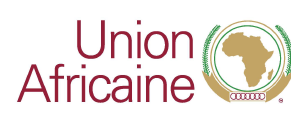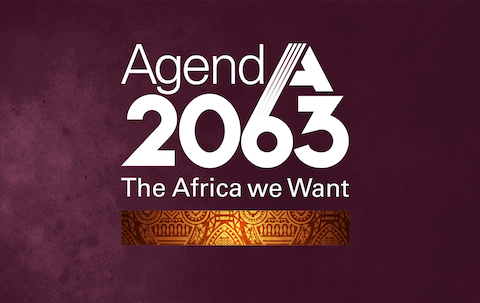COMESA
Official website http://www.comesa.int
Evolution of PTA/COMESA
The Common Market for Eastern and Southern Africa traces its genesis to the mid 1960s. The idea of regional economic co-operation received considerable impetus from the buoyant and optimistic mood that characterised the post-independence period in most of Africa. The mood then was one of pan-African solidarity and collective self-reliance born of a shared destiny. It was under these circumstances that, in 1965, the United Nations Economic Commission for Africa (ECA) convened a ministerial meeting of the then newly independent states of Eastern and Southern Africa to consider proposals for the establishment of a mechanism for the promotion of sub-regional economic integration. The meeting, which was held in Lusaka, Zambia, recommended the creation of an Economic Community of Eastern and Central African states.
An Interim Council of Ministers, assisted by an Interim Economic Committee of officials, was subsequently set up to negotiate the treaty and initiate programmes on economic co-operation, pending the completion of negotiations on the treaty.
In 1978, at a meeting of Ministers of Trade, Finance and Planning in Lusaka, the creation of a sub-regional economic community was recommended, beginning with a sub-regional preferential trade area which would be gradually upgraded over a ten-year period to a common market until the community had been established. To this end, the meeting adopted the "Lusaka Declaration of Intent and Commitment to the Establishment of a Preferential Trade Area for Eastern and Southern Africa" (PTA) and created an Inter-governmental Negotiating Team on the Treaty for the establishment of the PTA. The meeting also agreed on an indicative time-table for the work of the Intergovernmental Negotiating Team.
After the preparatory work had been completed a meeting of Heads of State and Government was convened in Lusaka on 21st December 1981 at which the Treaty establishing the PTA was signed. The Treaty came into force on 30th September 1982 after it had been ratified by more than seven signatory states as provided for in Article 50 of the Treaty.
The PTA was established to take advantage of a larger market size, to share the region's common heritage and destiny and to allow greater social and economic co-operation, with the ultimate objective being to create an economic community. The PTA Treaty envisaged its transformation into a Common Market and, in conformity with this, the Treaty establishing the Common Market for Eastern and Southern Africa, COMESA, was signed on 5th November 1993 in Kampala, Uganda and was ratified a year later in Lilongwe, Malawi on 8th December 1994.
It is important to underline the fact that the establishment of PTA, and its transformation into COMESA, was in conformity with the objectives of the Lagos Plan of Action (LPA) and the Final Act of Lagos (FAL) of the Organisation of African Unity (Organisation of African unity). Both the LPA and the FAL envisaged an evolutionary process in the economic integration of the continent in which regional economic communities would constitute building blocks upon which the creation of an African Economic Community (AEC) would ultimately be erected.
Changes in the Regional Economy
Up until the late 1980s and early 1990s most COMESA countries followed an economic system which involved the state in nearly all aspects of production, distribution and marketing, leaving the private sector to play a minor economic role. This system promoted import substitution and subsidised consumption.
The inefficiencies inherent in this system contributed significantly to the economic decline of the PTA/COMESA region. For example, by the mid 1990s:
- Gross domestic investment had fallen consistently for 20 years to a level below a minimum investment ratio of the required 20% of GDP needed to cover depreciation and repair costs; foreign direct investment (FDI) in Africa was negligible, at approximately 1 per cent of GDP, representing 0.8 per cent of all FDI and 2.1 per cent of FDI going into all developing countries.
- The share of exports from sub-Saharan Africa in world exports declined from 2.5% in 1970 to 1% in 1990, while its share in developing country exports declined from 13.2% to 4.9% in the same period.
- External debt of the COMESA region had, by the early 1990s, increased twenty-fold since 1970. Debt service ratios, which in 1970 were insignificant, averaged 45 per cent of export earnings in 1989-90, making the region one of the most heavily indebted in the world. The aggregate external debt owed by sub-Saharan Africa, including South Africa, was US$318 billion in 1994, compared to external financing to all African countries of about US$15 billion in 1996.
- Although industrial output grew in the 1960s and 1970s, this was followed by a sharp decline as a result of entrenched structural rigidities, weak inter-industry and inter-sectoral linkages, lack of access to advanced technologies and poor institutional and physical infrastructure. The African continent's share of world manufacturing value added (MVA) rose from 0.7 per cent in 1970 to 1 per cent in 1982 and fell to 0.8 per cent in 1994.
Thus from 1960 up until the mid-1990s, the economic growth of the COMESA region averaged 3.2 per cent a year, a figure marginally above the level of the region's population growth. By 1993, this region of about 280 million people then (excluding Egypt), which had more than doubled its population since independence, had a total GDP of around US$90 billion, and included fifteen of the twenty-three States classified as Least Developed Countries (LDC's) by the United Nations.










